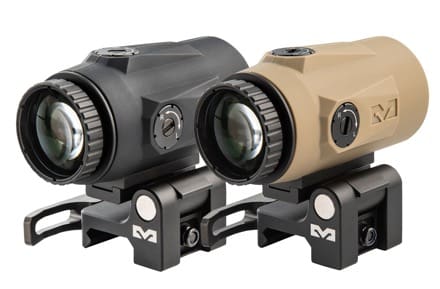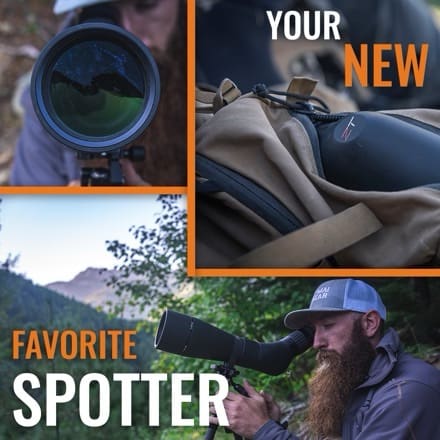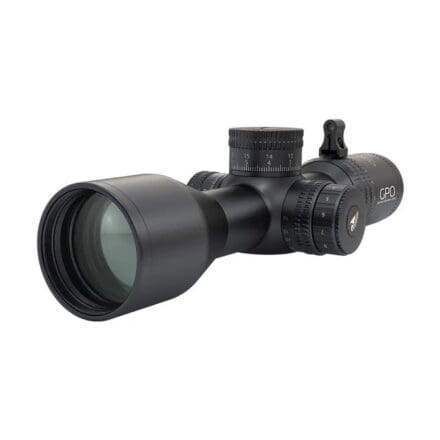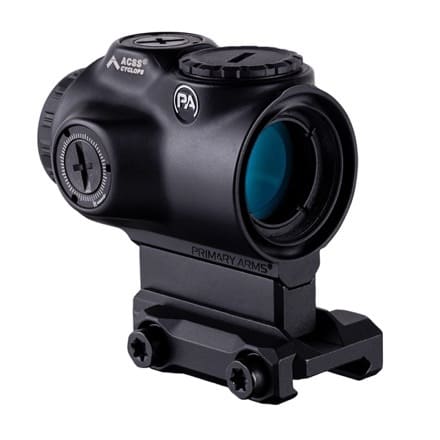In low-light shooting, ‘passive aiming’ is a technique wherein the shooter aims through their optic (usually red dot sights or holographic sights) rather than using an external aiming laser. The key advantage here is that passive aiming doesn’t emit any visible or infrared light that could reveal the shooter’s position, making it a safer option when faced with a threat that may be equipped with night vision.
The feasibility of passive aiming depends heavily on the compatibility between the optic and the NODs. Not all optics work well; some may offer a clear reticle under night vision, while others may struggle with head positioning or poor light transmission. Hence, choosing the right optic is essential for any dedicated night vision setup.
In this article, we’ll cover some of the core concepts behind passive aiming, including why some manufacturers market their optics as ‘night vision compatible’ and others do not. We’ll also look at best practices for choosing and setting up your optic to make passive aiming as straightforward as possible.
Passive Aiming: Benefits and Limitations
In low-light or no-light environments, maintaining stealth is crucial, especially when facing adversaries who might also be equipped with night vision capabilities. Active aiming, which involves using infrared lasers or illuminators, will instantly compromise a shooter’s location if the opponent is equipped with NODs. Passive aiming eliminates this risk by allowing the shooter to engage targets without broadcasting their position.
Passive aiming does, however, come with many challenges and potential downsides, especially when the optic isn’t set up properly.
When aiming passively, the shooter must align their eye, the optic, and the target through the night vision device, which can be a lot more difficult than it sounds. The shooter must maintain a consistent cheek weld, which is especially challenging when shooting from unconventional positions.
Another limitation is the restricted field-of-view of NODs and the innate tunneling effect of looking through an optic. Passive aiming tends to create a very linear focus through the optic. In contrast, active aiming with a laser allows the shooter to maintain a broader situational awareness and react to peripheral threats.
Given the immense trade-offs that exist between both passive and active aiming, current best-practice involves a mix of both shooting techniques, swapping depending on the demands of the situation and known capabilities of the opposing force.
Still, many of the tradeoffs of passive aiming can be mitigated by selecting the right optic and mount.
Night Vision Compatibility
As we’ve mentioned, not all optics are created equal when it comes to night vision compatibility.
To be considered night vision-compatible, an optic must allow the user to view the reticle clearly through NODs without causing excessive glare or reticle bloom. At the most basic level, a night vision compatible optic must have a reticle that can be dimmed sufficiently so that it doesn’t overpower the night vision tubes.
But simply being compatible isn’t necessarily synonymous with ‘good.’ In fact, many optics that are marketed as ‘night vision compatible’ aren’t effective due to other design aspects, such as poor light transmission or excessive body obstruction.
When selecting an optic for night vision use, three critical factors should be considered: illumination settings, window size, and glass quality.
• Illumination Settings: The ability to adjust the brightness of the reticle is essential. Most ‘night vision compatible’ optics will have a ‘night vision’ setting in the illumination controls. Multiple night vision settings are ideal, since there can still be a big difference in light levels under NODs. In urban areas, for example, you might have enough light pollution that a single ‘night vision’ brightness is too dim.
• Window Size: The size of the optic’s window or lens is another important consideration. A larger window provides a clearer field of view and makes it easier to align the reticle with the target, even in awkward shooting positions.A larger window also helps accommodate for the blur of the optic body, which can make small-windowed optics feel dark or claustrophobic.
• Lens Quality: Good lens design goes a long way in improving visibility through the optic, especially when combined with a low-profile body. Because of the focal distance of NODs, your optic body will usually blur around the optic window, so having a good clear window with minimal obstruction is important.
The Prevalence of Reflex Sights
Reflex sights, which include red dot sights and holographic sights, are the most common optics used with night vision devices. To summarize. these sights work by projecting a reticle—typically a red dot or a holographic pattern—onto a lens that the shooter views through. The reticle is superimposed on the target, allowing for quick target acquisition.
Since these optics are compact, lightweight, and have unlimited eye relief, they’re the most obvious choice for use with night vision. It’s very easy to set up a red dot with an extended mount and use it with minimal change in handling or behavior. And since low-light inherently limits your engagement distance, the lack of magnification is less of a tradeoff.
The only consistent issue with reflex sights is astigmatism. Under NODs, astigmatic blur isn’t an issue because it’s being passed through the night vision, but when moving into full light, ocular astigmatism will distort the reticle. This is accentuated by the variability of lighting conditions in urban environments.
Scopes and Night Vision
Using scopes with NODs introduces a unique set of challenges and considerations that differ from using reflex or red dot sights.
Standard rifle scopes are designed to gather and focus light during daylight hours, but when used with night vision, the light transmission properties of the scope can affect the clarity and brightness of the image. This is particularly problematic when using higher magnifications, as the image can become dimmer and more difficult to see through the night vision device.
Additionally, achieving the correct eye relief can be tricky, especially when using a rear-mounted night vision device, which might require the scope to be repositioned. While extended-height scope mounts and compact scopes are improving compatibility, it’s still significantly harder to line up a full rifle scope than any microdot or holographic sight.
Ultimately, setting up a scope for night vision usually involves attaching a dedicated clip-on, separate from helmet-mounted night vision. Alternatively, many have chosen to run an offset red dot with a scope, so that they can swap between the two as needed.
MicroPrisms: Do They Work?
MicroPrisms are a relatively new type of optic from Primary Arms that combines the simplicity and durability of a traditional prism scope in a reflex-sized body. These optics are typically fixed at a low magnification, often 1x, making them particularly useful for close to medium-range shooting. And unlike red dots or holographic sights, MicroPrisms have an etched reticle and diopter, meaning that they aren’t affected by astigmatism.
MicroPrisms come with multiple NV-compatible brightness settings, but the diopter and etched reticle lead many to question whether MicroPrisms are truly usable.
The answer is yes, though it does take a little more work to line up the diopter of the optic with the diopter of the NODs to make sure the optic is tuned for both daylight and NV. Even though MicroPrisms have an eyebox, they are significantly more forgiving than your average rifle scope, and the compact size means that it’s easier to accommodate through mount placement.
Basically, if you have astigmatism issues with red dots, or just prefer the etched reticle, 1x MicroPrisms are a perfectly viable option for night vision and passive aiming.
Practical Tips for Selecting and Setting Up Optics for Night Vision
Selecting and setting up optics for use with night vision devices involves careful consideration of compatibility, mounting height, and troubleshooting potential issues.
Look for optics that offer night vision-specific brightness settings that can accommodate a wide variety of light levels. Red dot sights and holographic sights from Aimpoint and EOTech are the most popular choices due to their simplicity and ease of use, but MicroPrisms are also gaining popularity as an alternative for their astigmatism compatibility.
Either way, mount height and positioning are crucial for effective use with night vision. The mount height should allow the optic to align naturally with your NODs when you’re in your shooting stance. Heights around 1.93 to 2.26 inches are popular for night vision setups, as they will fully clear a top-mounted IR device and allow you to maintain a heads-up posture, which is more comfortable and efficient when using NODs. However, be mindful that higher mounts might make close-range accuracymore challenging due to height-over-bore. You also need enough clearance between the front of your night vision from the rear of the optic, ensuring that they don’t bump into one another under recoil.
Common issues when using night vision optics include reticle bloom, acquisition problems, and light transmission. To prevent reticle bloom, always start with the lowest brightness setting on your optic and gradually increase it until the reticle is visible but not overpowering. If you are having trouble getting behind the sight, particularly with higher mounts, you may need to adjust your shooting stance or experiment with different mount heights to find the most comfortable and effective setup. If an optic has poor visibility through the lens, make sure that you have a clean lens, as dust and contaminants can inhibit image clarity.
Conclusion
Selecting and setting up optics for night vision use is a nuanced process that requires a deep understanding of both your equipment and the conditions under which you’ll be operating.
Throughout this guide, we’ve covered the importance of choosing optics that are specifically designed or compatible with night vision devices, such as reflex sights, holographic sights, and MicroPrisms. We’ve also discussed the critical role of proper mount height and positioning to ensure seamless alignment and functionality in low-light environments.
Night vision is a powerful tool that, when paired with the right optics and proper setup, can give you a significant tactical advantage. However, like all tools, it requires familiarity and skill to be used effectively. As you move forward, it’s crucial to experiment with your gear and engage in regular training to become proficient with your night vision setup. The more you practice in realistic scenarios, the better you’ll understand the strengths and limitations of your equipment and aiming techniques.
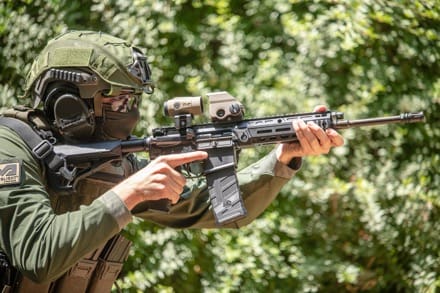 Israel, October 01, 2024 – Meprolight (1990) Ltd., a member of the SK Group and a leading manufacturer of electro-optical systems, thermal and night vision equipment, as well as self-illuminated sights for military, law enforcement, and civilian applications, unveils the MMX3/MMX4 micro magnifiers for assault rifles. These compact and lightweight magnifiers provide up to 4x magnification for any red dot sight, significantly enhancing soldiers’ accuracy, range, and observation capabilities, thereby equipping them with marksman-like abilities.
Israel, October 01, 2024 – Meprolight (1990) Ltd., a member of the SK Group and a leading manufacturer of electro-optical systems, thermal and night vision equipment, as well as self-illuminated sights for military, law enforcement, and civilian applications, unveils the MMX3/MMX4 micro magnifiers for assault rifles. These compact and lightweight magnifiers provide up to 4x magnification for any red dot sight, significantly enhancing soldiers’ accuracy, range, and observation capabilities, thereby equipping them with marksman-like abilities.


